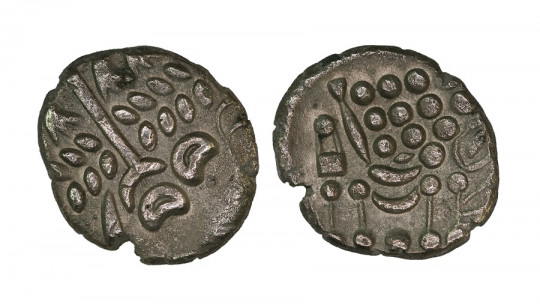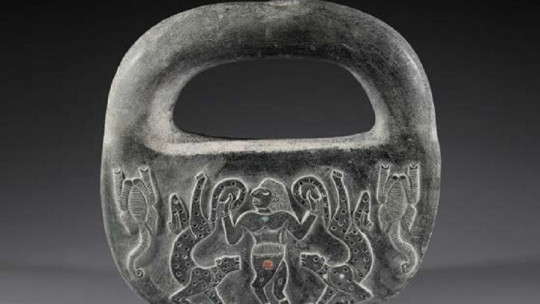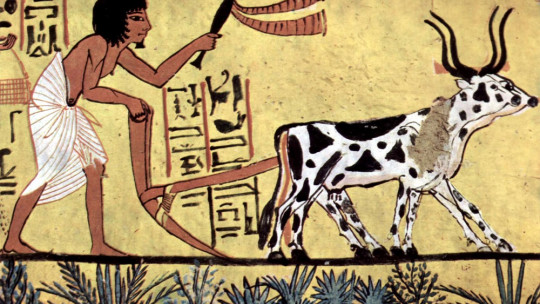Human beings have always used metals, although it may not seem like it. Long before the beginning of the Age of Metals, prehistoric men and women already used iron oxides to make pigments to decorate the walls of caves, as demonstrated by the remains of Terra Amata, in Nice, France; remains that date back no less than 350,000 years.
However, the use of metal as a casting material for the manufacture of objects is much more recent. The first object made of metal (with copper, in this case) was found in the Shanidar cave, in modern-day Iran. It was a pendant made with this material, whose production was dated 9,500 years ago.
The Shanidar bracelet is, however, an isolated case, since the production of metal objects did not begin to proliferate until much later, when Eurasia entered the so-called Age of Metals a very extensive period that covers approximately from the 7th to the 2nd millennium BC. Let’s see what it is and what its characteristics are.
Stages of the Metal Age
Traditional historiography places the birth of metallurgy in the Near East, with the first evidence of copper smelting in the areas of Anatolia (present-day Turkey) and the Zagros Mountains (Iran and Iraq) in the 6th millennium BC. In the case of Europe, the first vestiges date back to more recent times, since the first evidence is found in the Balkans in the 5th millennium BC. From there, Copper production spread to the rest of the continent in the 2nd millennium BC
Experts distinguish 3 specific phases in the Age of Metals, which we detail below.
1. The Copper Age
The first stage is characterized by the smelting of copper (along with other metals such as gold and silver), whose oldest object we have already mentioned is the oval pendant from the Shanidar cave, in Iran. The antiquity of this ornament makes it difficult to date the beginning of the first phase of the Age of Metals, since it dates back to no less than the 10th millennium BC, in clear contradiction with the rest of the vestiges, which are much more recent.
However, and as the first usual evidence of manufacturing with copper dates back to the 7th millennium BC, this date is taken as the starting point of the Age of Metals and, specifically, of the Copper Age.
The most abundant deposits are those of Çatal Huyuk, in Turkey, and those of Ali Kosh, in southern Iran These deposits are made up of pieces for everyday use (ornaments and pins), made by cold hammering of the natural copper nuggets existing in nature, the first manufacturing procedure for metal objects.
Copper is a very abundant material and easy to shape. These are probably the main reasons why this was the first metal to be manipulated by humans. Much later it was discovered that this material was present in elements such as malachite, so it was no longer necessary to resort to natural copper formations. The appearance of the casting technique revolutionized the panorama of production with this metal. Thus, the first known object made of molten copper was found, again, in the Zagros Mountains, and its production has been dated to the 5th millennium BC.
2. The Bronze Age
The next period in which the Age of Metals has traditionally been classified is the Bronze Age, which It begins approximately in the 4th millennium BC with the alloy of copper and tin, which resulted in a new material
The first manifestations of bronze objects occurred in the Near East, in the area of Mesopotamia. And, although this stage is included within Prehistory, in these regions the Bronze Age fully corresponds to the historical period, since, in parallel, the Mesopotamian civilizations developed, whose cuneiform writing is its main manifestation.
Bronze was not used in Europe until very late dates; In central Europe, for example, this material did not arrive until the 2nd millennium BC On the other hand, in the Aegean islands (especially in the Minoan civilization, especially famous for its sophistication), ornaments and everyday objects made of bronze began to be predominant around the 3rd and 2nd millennium BC.

This reveals the great limitations that these classifications entail, imposed by European experts in the 19th century. At that time, a Eurocentric notion of history prevailed, in addition to a highly diffusionist vision that promulgated that “everything” had been born in the East and, from there, had spread to the rest of the world (as stated in the famous Latin maxim: Ex Oriente lux, from the East the light).
Currently, the nineteenth-century classification that divides the stages of the Age of Metals into three is still used, but most experts categorically reject this “linear” evolution. As we will see in another section, the case of Africa is especially interesting, since it offers many centers of iron metallurgy that, in all probability, appeared indigenously, without any contact with the East.
3. The Iron Age
This is the last of the three stages into which the Age of Metals is divided, characterized by the use of iron as a basic material for the manufacture of all types of elements, especially those related to the production of food (knives), clothing (needles and pins) and war (swords, arrowheads…).
The immediately preceding stage is the last period of the Bronze Age, the so-called “Final Bronze”, which would correspond with the Mycenaean civilization in continental Greece and (if we consider the source of the Iliad as historical) with the legendary Trojan War. The collapse of the Mycenaean civilization, which according to many experts was due to the arrival of the mysterious “people of the sea”, meant the end of this stage.
Although iron is the fourth most abundant element on Earth, its daily use was not established until the 2nd millennium BC. As is usually the case, the expansion of iron metallurgy is very uneven; while the evidence from Çatal Huyuk, in Turkey, dates back to the 3rd millennium BC, the Iron Age does not reach Europe until the 1st millennium BC; specifically, around the year 800 BC
The curious case of the Metal Age in Africa
According to the diffusionist theory, in force since the 19th century, iron would have appeared in Africa under the influence of Carthage, which, in turn, would have learned the technique from the East. However, recent research casts doubt on this claim.
In the area of Nigeria there existed between the 1st and 2nd millennium BC a civilization that has been given the name “Nok civilization”, in reference to one of the Nigerian cities where the most remains have been found. Curiously, this culture knew the technique of iron at very early dates, while, in the rest of the continent, the populations were still anchored in the Neolithic and in the production of stone objects.
This singularity has brought experts to their senses and has generated diverse and heated debates. Is iron production in Nok perhaps indigenous? Had its inhabitants discovered the iron smelting method in parallel to the East? Of course, there is no shortage of those who attribute the mystery to an error in the dating of the remains found in these sub-Saharan areas. According to this theory, the iron objects found would correspond to a more recent period, and would therefore have a clear Carthaginian and Egyptian influence. But the fact is that no evidence has been found of contact between these peoples and the people of Nok, nor with other areas of central Africa.
In light of so much evidence, It is necessary to rethink the theory that “everything” came from the East In the case of Africa, the main problem is the chronic lack of interest that traditional archeology has experienced towards this continent, with the exception, of course, of Egypt. Therefore, much more research is needed in this regard.









